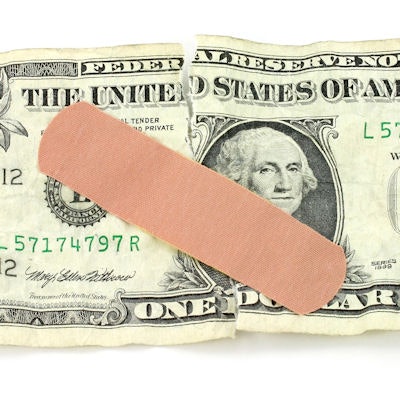
Some common oral surgery procedures are not profitable, according to a study published in the Journal of Oral and Maxillofacial Surgery. Without sedation, oral and maxillofacial surgeons can lose hundreds of dollars for popular procedures, including routine and surgical extractions.
Researchers from the University of Texas (UT) Health Science Center at San Antonio analyzed the cost and reimbursement rates of six of the most common outpatient procedures. They found that almost none of these procedures were profitable without sedation.
"Simple [oral and maxillofacial surgery] procedures have been becoming less profitable as material costs have continued to increase and remuneration has continued to stagnate or decrease," wrote the authors, led by Edward Ellis III, DDS, a professor in the department of oral surgery (JOMS, June 4, 2019). "Without the addition of additional procedures or sedation per procedure, many of the common procedures performed by oral and maxillofacial surgeons in their offices will negatively affect their profits."
To come up with the numbers, the authors analyzed the costs of materials, labor, and overhead for common oral surgery procedures. Their analysis included variables such as procedure time (estimated 30 minutes), the salary of an oral and maxillofacial surgeon ($593,593), and fees for rent, insurance, and other miscellaneous expenses.
The authors then subtracted the cost of each procedure from the reimbursement rate for Medicaid, Humana, and Delta Dental, the three most commonly accepted insurance providers at UT Health San Antonio's outpatient oral surgery clinic.
| Net loss/profit for common oral surgery procedures | ||
| Procedure | Net profit/loss without sedation | Net profit/loss with sedation |
| Routine extraction | -$261 to -$230 | -$222 to -$61 |
| Surgical extraction | -$242 to -$153 | -$203 to $8 |
| Incision and drainage | -$311 to -$212 | -$272 to -$51 |
| Preprosthetic | -$269 to $140 | -$230 to $301 |
| Pathologic | -$269 to $326 | -$230 to $487 |
| Implant, stage I* | $847 | $1008 |
Some of the most common oral and maxillofacial surgery procedures done in offices are not profitable, the researchers found. For instance, surgeons collect $64 from Medicaid and $95 from Delta Dental and Humana for a routine extraction in Texas. As a result, surgeons would need to sedate patients or extract multiple teeth to make the procedure profitable.
"This results in a loss of $230 to $261 for the procedure," the authors wrote, "meaning at least six teeth on a single patient would need to be extracted in one visit to create a profit if Medicaid was the insurer or four teeth if Delta Dental or Humana were the insurers."
The findings support the notion that oral surgeons are getting paid less for their work, according to the authors. Consequently, oral and maxillofacial surgeons may need to follow certain strategies to meet their profitability goals.
"As the reimbursement for cases has continued to stagnate or decrease and the cost of materials has continued to increase, the presumed most viable option for the practicing oral-maxillofacial surgeon is to increase the volume of cases to both adequately treat the population and maintain a certain collection goal," they wrote.



















